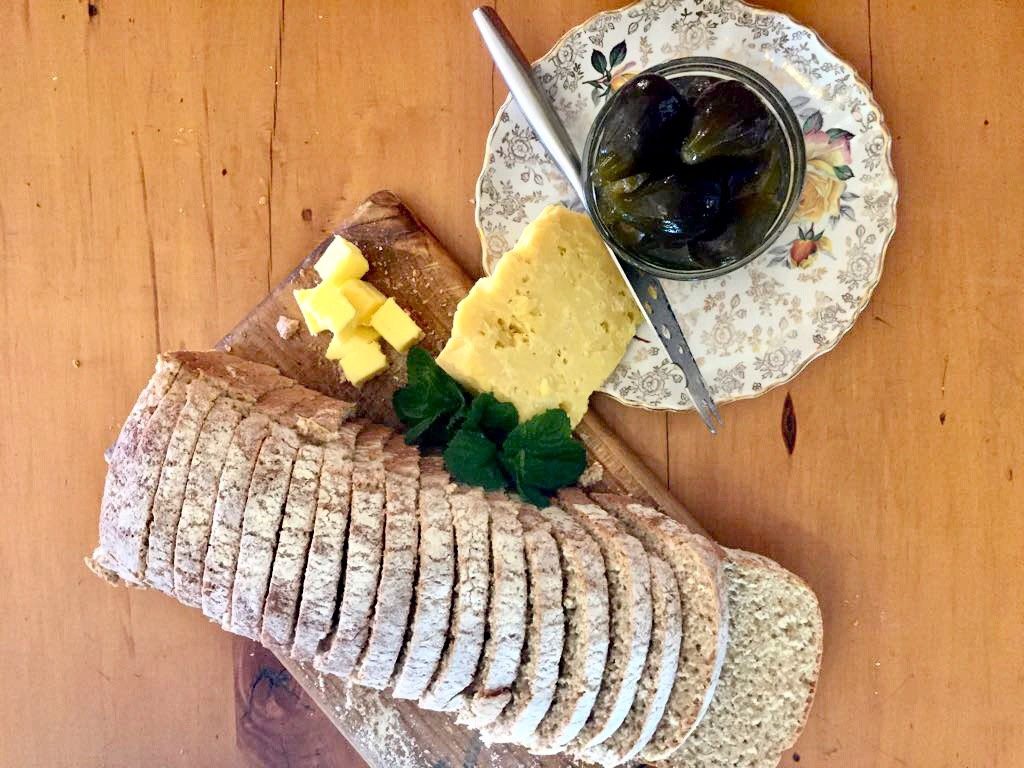Green fig preserve always has a way of transporting me back to the “simpler days”, when springtime would be signalled by the arrival of a big batch of figs – and simultaneous my parents, visiting us all the way from Bellville a suburb of Cape Town. Now, if you’ve ever experienced a taste of authentic farm life, you’ll know that the day waits for no one – and when the rooster wakes up at 5am, so do you! Before the break of dawn my father would already be at work in the kitchen, a beautiful green fig resting in one of his big hands and a trusty pocket knife in the other.
Cleaning figs was his self-appointed duty, and he’d sit for hours at the kitchen table, painstakingly cleaning every single fig and cutting a small cross into the bottom of each fruit – the secret to syrupy figs. Meanwhile my mother, the “pot stirrer” (not so much in the figurative sense of the word), would tend to the batch of preserves, simmering away on the stove in our big silver pot. And let’s not forget the preserve jars, already cleaned, polished, lined up on the counter and ready for bottling! I distinctly remember the sugary fragrance of the fig preserve, lingering in every corner of the house until long after they’ve departed back to Cape Town – a sweet reminder of the two people we love so dearly.
Even though the dawn of the new season is no longer signalled by my beloved parents pulling up in their Datsun bakkie, I’m grateful for the fact that I still get to relive these memories every spring when the fresh batch of green figs arrives on the farm. And when you visit Skeiding Guest Farm you’ll find not one but twenty different variations of homemade preserves on the breakfast Buffet, lovingly prepared, cooked and bottled, and best enjoyed on a slice of fresh farm bread with salty butter and cheese– a true taste of nostalgic South African tradition!
Preparing the green figs
- Soak the figs in water overnight with a handful of Baking soda dissolved in the water.
- Wash the figs and scrape the stalks clean. Carve a small X into the base of the fig (like my dad used to do).
- Bring a big pot of water to the boil (enough to cover the figs), and cook the figs for 10 minutes until slightly tender. To test: If you can easily prick a fig with a match, it’s ready to go!
- Remove the figs from the water and squeeze each one gently to get that excess water out. This is an important part of the process and must not be skipped. If you do skip it, the syrup inside the fig will not “jam” properly, but stay watery and the preserve could go off quickly.
Preparing the syrup
- Combine 21 cups of water with 5kg sugar, and add a big piece (or two) of dried or fresh ginger to the mix. It is very important to stir the water and sugar mixture when bringing it slowly to boil, because all the sugar must be dissolved before it start to boil. This is to prevent your preserve from making sugar crystals.
Cooking the green figs
- Place the figs one at a time in the boiling syrup, ensuring that the syrup does not stop boiling.
- Boil, uncovered for 50 minutes. Add half a cup of lemon juice and boil for another 10 minutes.
Bottling the green figs
- Spoon the boiling hot figs and syrup into hot, dry, sterilised bottles and seal immediately. Pay special attention to fill it to the brim with syrup.
- Wipe the jars clean, and display on your kitchen shelf until you’re ready to serve it with freshly baked bread.

